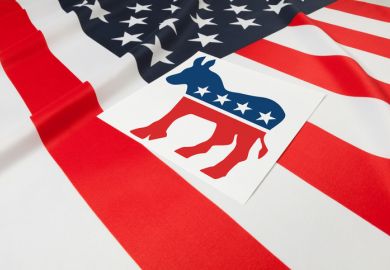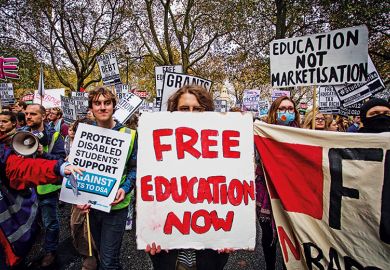US presidential candidate Joe Biden plans to direct billions of federal dollars to universities based on the number of low-income students they serve if he is victorious in November’s election.
The idea represents a potentially major expansion of taxpayer support for higher education by the federal government, which currently routes the bulk of such aid through money it provides to students.
The proposed new avenue of support, said a top Biden education adviser, Heather Gautney, reflected the growing recognition that US colleges serving large numbers of low-income and minority students get relatively little additional help to do the job.
Many public US colleges – squeezed between declining state support and growing enrolment demand among minority and first-generation students – “are in dire need of” such help, said Dr Gautney, an associate professor of sociology at Fordham University who served as co-chair of Mr Biden’s advisory panel on higher education.
Mr Biden had included the idea of substantial institutional aid as part of his platform during the campaign, and the advisory panel’s agreement on the idea raises its political prominence ahead of the election.
Its ultimate prioritisation, said one leading advocate of the idea, policy analyst Wesley Whistle, would clearly need to fit alongside the far louder campaign season calls by Mr Biden and many of his Democratic party contenders for some means of making college free or debt-free for low-income students.
But the political moment, including the employment crisis created by the coronavirus pandemic and the attention to racial equity spurred by the killing of George Floyd, could put renewed attention on low US graduation rates, especially among low-income minorities, advocates said.
Even with the federal government now spending nearly $30 billion (£24 billion) a year on the Pell grant programme for low-income students, Mr Whistle and others have pointed out, those students are far more likely to end up in a “worst-case scenario” of carrying student loan debts yet still lacking a degree.
Mr Biden’s student aid plan would make public colleges tuition-free for about 80 per cent of US students – those with family incomes below $125,000. But while about 60 per cent of the wealthier US college students graduate, the completion rate among low-income students is about four times smaller.
The idea for a new institutional aid programme at the post-secondary level is broadly modelled on the federal government’s existing Title I programme, through which some 50,000 schools receive about $15 billion allocated by formulas tied to family income levels.
That programme has its own controversies. The funding works out to only about $500 per student per year, and often the money is used by school districts for broad activities of unproven value that have at best only an indirect impact on the needy students intended to be helped, said policy analyst Mark Dynarski, the founder of Pemberton Research.
Such problems could well be replicated at the post-secondary level, Dr Dynarski said.
“How one ensures that these funds are spent primarily on low-income students is the hard part,” he said.
According to Dr Gautney, the need to sort out such concerns and details pointed to the likelihood that both the free college concept and the idea of a Title I for higher education would not be enacted quickly.
With such sweeping overhauls on the agenda, she said, “it’s fully within the realm of possibility that Biden will get there and have to spend a year or two really trying to work Congress to make it happen”.
Register to continue
Why register?
- Registration is free and only takes a moment
- Once registered, you can read 3 articles a month
- Sign up for our newsletter
Subscribe
Or subscribe for unlimited access to:
- Unlimited access to news, views, insights & reviews
- Digital editions
- Digital access to THE’s university and college rankings analysis
Already registered or a current subscriber?







